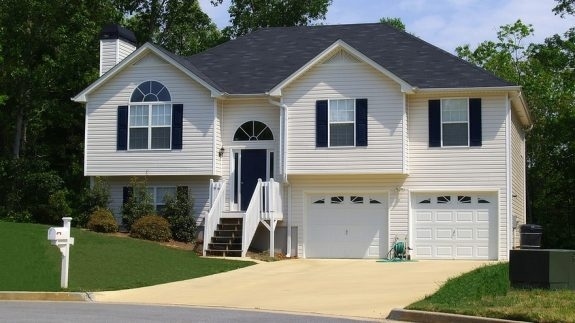Depending on what source you read, there is much speculation about what the economy will be like in 2015. Some think that Europe is on the verge of another recession, and wonder if that would affect the United States. There is also some discouraging news about declining stock prices and decreased production in the oil industry. Despite these troubling facts, there is some optimism being expressed concerning the U.S. housing industry in the coming year.
For starters, foreclosure filings in 2014 reached their lowest level since 2006. Available data seems to show strength in both housing demand and in prices. So, there are reasons to look forward to better days.
Marketwatch shares with MHProNews 10 Reasons Why Housing Will Flourish in 2015 as compiled by Financial Journalist Jeff Reeves, using his Strength in Numbers analysis:
- Housing starts are strong: Housing starts are at their highest level in seven years, with new-home construction up 4.4% in December, according to the latest numbers. That pushes up 2014’s total to more than 1 million housing starts, the highest mark since 2007 and up almost 9% from 2013.
- Permits are strong, too: While overall permits filed in December for new construction did decline a bit, it is felt this was driven by a dip in filings for apartment buildings. Regarding the all-important single-family home portion of permits, that figure actually rose at its fastest pace since January 2008, with a 4.5% increase.
- Consumer sentiment is high: Thanks to a recovering job market and low gas prices, consumer confidence is at an 11-year-high. As Americans feel more secure in their finances, this is naturally a boon to the housing market as folks feel confident enough to take on a mortgage and buy a home.
- Housing prices are still up: While the pace of increases in home prices has slowed down, the trend is still high. In the most recent S&P/Case-Shiller report of prices in major U.S. housing markets, prices were up 4.6%. Critics will note that’s down sharply from double-digit gains a few years ago, but it’s important to remember that the housing market crashed because of unsustainable pricing. A levelling off in growth is a good thing in the long run. As long as prices are trending modestly upward, buyers aren’t going to be scared to purchase a home.
- Homebuilders are confident, part 1: According to the National Association of Home Builders, sentiment remained strong among U.S. residential-construction companies in January. While the group’s measure of builder confidence did fall slightly to a reading of 57, anything over 50 is considered positive. Furthermore, the reading is stronger than it was at the beginning of 2014, signaling good year-over-year momentum.
- Builders are confident, part 2: If you want a tangible measure of confidence, consider a recent Wall Street Journal report from a Las Vegas builders’ trade show that noted an “air of optimism” at one of the largest trade shows in years for the business. In fact, WSJ quotes the chief economist of the National Association of Realtors, who is projecting a 41% jump in new-home sales this year over last. That growth rate may be hard to accept, but at least it shows a good measure of optimism expressed by builders.
- Hurdles drop for first-time buyers: In the wake of the financial crisis, regulators and the mortgage industry were concerned with enacting more stringent lending standards to stabilize the American housing market and the economy. Now, however, the pendulum is swinging back the other way, with the Federal Housing Administration drafting plans to boost lending to those with lower income levels and to first-time home buyers. Though the idea of lenient lending practices reminds some of a return to the old days of “liar loans,” facilitating responsible lending to less-than-perfect borrowers is good for low-income Americans, and good for the housing market as a whole.
- Builders cater to lower-income buyers: Lest you think this is all government-led shenanigans to help low-income homebuyers, some of the nation’s largest builders have also seen opportunity in lower-priced homes. Specifically, D.R. Horton, Inc., announced last spring that it will build homes in the $120,000 to $150,000 range, roughly half the median home price in the U.S., in an effort to connect with first-time buyers. Lennar Corporation isn’t far behind, with a project of its own in the $175,000 to $200,000 range. Connecting with “down-market” homebuyers is good for overall prices and for demand.
- Foreclosures at pre-crisis levels: A recent report from real estate data provider RealtyTrac shows foreclosure filings in 2014 were down 18% from 2013, and hit the lowest level since 2006. Furthermore, bank repossessions for 2014 were down 69% from their peak during the mortgage meltdown. That’s an undeniable sign of health.
- What interest rate hike? There has been plenty of talk in the past year or so about how rising rates will hurt the housing market by increasing the cost of borrowing. But 30-year fixed-mortgage rates are now at 3.8% while the typical mortgage was offered at 4.5% a year ago. So while there may be an interest rate increase in store for us sometime in the future, let’s not act like we won’t be able to afford a mortgage.
This bright future expressed by Jeff Reeves for housing sales in the coming year will, no doubt, be reflected in sales of manufactured and modular homes as well when prospective buyers realize the benefits and cost savings available in factory-made homes.
(Photo Credit: Marketwatch)
Article Submitted by Sandra Lane to – Daily Business News- MHProNews.



























